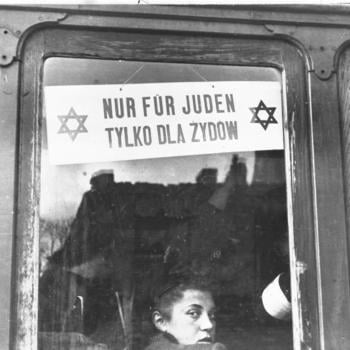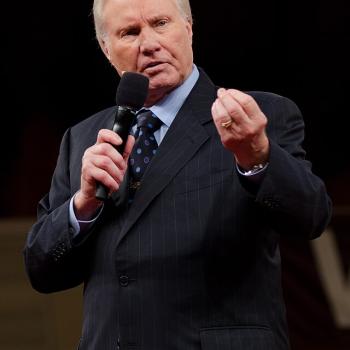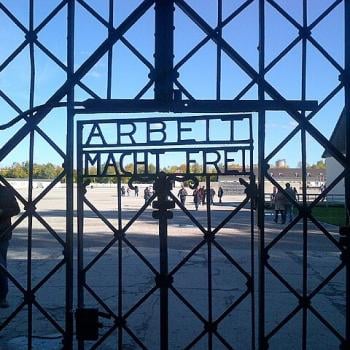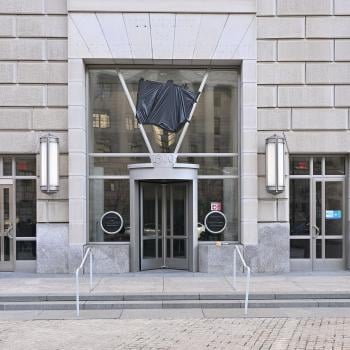Are Pentecostals Fundamentalists? Part One
*Note to would-be commenters: If you choose to post a comment or question, please keep it brief (no more than 100 words), on topic (don’t misuse my blog to preach your own worldview or theology), civil and respectful (not argumentative or hostile), and do not include any links or photos.*
What a question! So hard to answer. To outsiders, non-Pentecostals, yes, most often they are thought of as fundamentalists. To insiders, such as I was, no, we were not fundamentalists. Everything depends on how one defines “fundamentalist.” “Pentecostal” is somewhat easier to define, although even that category has in recent decades become “fuzzy.” When I was growing up Pentecostal in America (but with aunts and uncles who were Pentecostal missionaries in many other countries), being Pentecostal was relatively clear—as to what that meant. We had the PFNA (Pentecostal Fellowship of North America) and the World Pentecostal Fellowship. However, there were historically and theologically Pentecostal (or “Full Gospel” which was the label we preferred) who did not belong to the PFNA for various reasons I’ll mention later. So we had unity and diversity. But, of course, “we” were the true, pure Pentecostals. I suspect every Pentecostal denomination (we preferred “movement” and “fellowship” over “denomination”) thought THEY were the true, pure Pentecostals.
Although there were many Pentecostal-like Christian movements before 1901, we were taught that our movement, “the Pentecostal movement,” “the Full Gospel” outpouring of the Holy Spirit, really began then, on New Year’s Day, 1901. Since then, Pentecostal and other historians have changed that. Today, it is said, the modern Pentecostal movement in which I grew up began during the Azusa Street Revival in Los Angeles, California in 1906. I won’t go into all the reasons for that shift in Pentecostal historiography.
I grew up “in the thick” of the American Pentecostal movement during the 1950s and 1960s and was ordained by a “classical Pentecostal” (not “charismatic”) denomination in the mid-1970s at age 23. I had just graduated from a Pentecostal Bible college where I majored in Bible and theology and was serving as assistant pastor in a classical but independent Pentecostal church that was changing, gradually drawing in non-Pentecostal charismatics and so-called Jesus People. I will explain more about that later.
Over the years I have studied especially the American Pentecostal movement in all its varieties. I hear non-Pentecostals refer to us as “Holy Rollers.” I never saw anyone roll. I hear non-Pentecostals refer to us as “snake handlers.” I never saw a snake in any Pentecostal church. We knew about real holy rollers and real snake handlers, but we would not have accepted them as really “us.” They were our crazy cousins somewhere, perhaps mostly in the South. We were in the Upper Midwest. Pentecostals in different parts of the U.S. differed from each other in some significant ways—in the mid-20th century and still today.
In spite of the PFNA, American Pentecostals never did achieve unity, but there were some significant similarities. We all believed in being born again, in the inspiration and infallibility of the Bible, interpreted as literally as possible, in the return of Christ in two stages, the rapture and then, seven years later, the visible return of Christ to usher in his thousand year reign on earth (the “millennium”), the deity of Jesus Christ, the Trinity (although some Pentecostals did and do not believe in the Trinity), etc. In other words, in spite of the existence of one branch of the Pentecostal movement called “Oneness Pentecostals” that denied the Trinity, we were doctrinally orthodox, experiential evangelical, and conservative in lifestyle. I have often told my students that I look back on my childhood and youth and think “urban Amish.” That’s not quite right, though. I meant to convey to them how much we strove to be different from “the world”—the increasingly secular and liberal culture around us.
We most definitely did NOT consider ourselves fundamentalists because, to us, the real fundamentalists were the (for example) GARBC (General Association of Regular Baptist Churches) people all around us who we knew considered us a cult and possibly even demon-possessed because we spoke in tongues. And yet, as I learned, we had much in common with them. However, we did not have any fellowship with them. And that was as much or more by their choice than by our choice.
We considered our “closest Christian cousins,” who were not quite as “good” as us—in terms of being fully Spirit-filled—the Nazarenes and other “holiness” Christians in the conservative, revivalist Wesleyan traditions. But even they held us at arm’s length because of our belief—and this is “the distinctive doctrine” of classical American Pentecostalism-that a person has to speak in tongues to be “filled with the Holy Spirit.” Speaking in tongues was, to us, to all classical Pentecostals throughout the 20th century, “the initial, physical evidence of the baptism of the Holy Spirit.” We acknowledge that other Christians could be born again, but only we were Spirit-filled and only once we spoke in tongues.
We believed in the “continuation” of all the gifts of the Holy Spirit mentioned in the New Testament, but we especially emphasized, healing (we didn’t call it “faith healing” but “divine healing” because God did the healing), prophecy (“forthtelling, not “foretelling”), speaking in tongues (two kinds), and “interpretation of tongues.” Also “words of knowledge” and “words of wisdom.” And we believe in miracles.
Our Sunday morning worship services were relatively calm but not formal. We did not have a formal, printed “order of worship,” but the pastor (and my pastor was my father) led the worship. It always began with prayer and singing hymns and gospel songs, followed by a time for congregational prayer, followed by scripture reading, followed by a sermon (allegedly extemporaneous but probably prepared in some form or manner), followed by singing, followed by announcements and dismissal. People then went to each others’ homes for Sunday dinner and fellowship.
Sunday evening was very different. Sunday evening service began at 6:00, was better attended than Sunday morning, and was very emotional with lots of loud singing with hand-clapping, special music by guests or people from the congregation offering two or three “special numbers” (songs) in a kind of performance style, times for speaking in tongues and prophesying, laying on of hands for healing (with anointing with oil), preaching (often by a guest evangelist), and loud praying around the altar and in the prayer room. Sometimes on Sunday evening someone would “dance in the Spirit,” or run around the sanctuary, or fall down (“slain in the Spirit”). These were exciting services and I will never forget them. Sometimes they were a bit scary, especially when the guest preacher was a missionary and dragged out a “call to missionary service,” and I prayed for God not to call me to anyplace where there were snakes.
Most of the being “baptized in the Spirit with speaking in tongues” took place at summer youth camp or revivals. Our church had two or three “protracted revivals” with guest evangelists preaching a year. That meant church every night of the week except perhaps Saturday. During the normal week we attended church Sunday morning for Sunday School and “church” and Sunday evening for “youth meeting” and revivalistic worship (often lasting late into the night) and Tuesday evening for “prayer meeting,” and Thursday evening for “Bible study.” Our whole life revolved around the church and the denomination and as a child I was not sure who actually was my family and who was not real family but “church family.” The boundaries were blurry. Our church was our family and our denomination was our extended family.
Not every American Pentecostal who grew up as I did in “the thick” of Pentecostalism in the mid-20th century will remember it as I do. One reason for my particular experiences and memories is that my father was our church’s pastor, many of aunts and uncles were ministers or missionaries in our denomination, and for twenty-five years my uncle was president of our little Pentecostal denomination. But there was one particular pastor in our little Pentecostal denomination who seemed to emerge as the real, informal leader. Everyone took whatever he said or wrote with utmost seriousness.
Our Pentecostal denomination (or “full gospel fellowship” because we denied being a “denomination”) was an offshoot of the International Church of the Foursquare Gospel founded by evangelist Aimee Semple McPherson. Our founding leaders were her associate evangelists and they broke away from her when…she did something. I was never quite sure. But when she married for the third time, our leaders really “buried” her in terms of ever talking about her. We (I mean out leaders) tried to unit with the Assemblies of God, the largest white Pentecostal denomination in the U.S., at least twice, but it didn’t happen.
American Pentecostals, both white and African-American, were divided by two main doctrinal differences. We were trinitarians, whereas some Pentecostals were “Oneness,” believing that Jesus “is” the Father, Son and Holy Ghost (a modern for of the ancient heresy of modalism). We called them “Jesus Only” and didn’t have any fellowship with them because they were considered heretics. And we were not Wesleyan-holiness Pentecostals like The Church of God (Cleveland, Tennessee) and the Pentecostal Holiness Church. However, we did have fellowship with them; we just disagreed about whether “entire sanctification” was possible in this life, before death and “glorification” in heaven.
The PFNA included both our non-Wesleyan, non-holiness groups and the Wesleyan-holiness groups. But the Oneness Pentecostals were excluded. Sadly and very ironically, the PFNA excluded African-American Pentecostals which led to its eventual demise as an organization and the formation of a new, racially integrated organization.
We, our type of Pentecostals, also rejected what we called “wildfire,” an especially emotional type of Pentecostalism that arose with the so-called “Latter Rain Movement” in the late 1940s and throughout the 1950s. I divided our church and many other Pentecostal denominations and churches. Echoes of the Latter Rain Movement exit today in certain Pentecostal-charismatic-renewalist churches that emphasize “personal prophecy” and miracles galore. I won’t name them here, but you may know which ones to which I refer. Classical Pentecostal denominations like the Assemblies of God and the International Church of the Foursquare Gospel and the Church of God (Cleveland, TN) rejected and reject “wildfire.”
Two other movements that began within American Pentecostalism and caused much division and consternation were the Word-Faith movement of the “prosperity gospel” (“name it and claim it”) and the Charismatic Movement. My father embraced the Charismatic Movement (non-Pentecostal Christians who spoke in tongues), but rejected the Word-Faith movement.
So, were we Pentecostals fundamentalists? We knew we were considered such by many outsiders, but we vehemently rejected that label because we associated it with Independent Baptists and GARBC churches and people. THEY were the true fundamentalists and we stood apart from them. But the main difference was that they rejected the contemporary reality of the supernatural gifts of the Holy Spirit and we embraced and practiced them.
In Part Two here I will tell more about what it was like to grow up Pentecostal or “full gospel” in the mid-20th century. It was very different, I suspect, from growing up Pentecostal today. And I will answer the question whether Pentecostals were and are fundamentalists more fully in Part Two (or possibly a Part Three).













